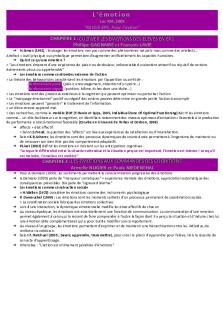RIA notes PDF

| Title | RIA notes |
|---|---|
| Author | Eunbi Jung |
| Course | Immunology 1 |
| Institution | University of Technology Sydney |
| Pages | 3 |
| File Size | 150.9 KB |
| File Type | |
| Total Downloads | 6 |
| Total Views | 128 |
Summary
RIA notes with advantages and disadvantages...
Description
Radioimmunoassay (RIA) Radioimmunoassay is an in vitro (in test tube) assay that measures the presence of an antigen with very high sensitivity. Usually the presence of any antigen and antibody can be determined and measured even in a minute concentration. RIA is one of the most sensitive and specific techniques of immune assays and the first technique to analyse up to picomolar concentrations (10-12) of a biological substance. History: Developed on 1960 by S. A. Berson and Rosalyn Yalow and Rosalyn R. which received a Nobel Prize in 1977 as the first technique to determine the presence of hormone levels in blood using in vitro assay. RIA acts on 3 principles: an immune reaction, a competitive binding, measurement of radio emission assay. Conditions for RIA: Specific antiserum to the antigen to be measured, availability of radioactive labelled form of the antigen, a method in which the antibody bound tracer can be separated from the unbound tracer, an instrument to count radioactivity. Forms of RIA: Non Competitive (direct) RIA: In non-competitive assays, an antigen is tagged with a radioisotope (eg. l125) and then added in excess to be bonded with an antibody (coated on the surface of a well/immobilised). When the unlabelled antigen is added, it can replace the spot of the radiolabelled antigen (based on the concentration of the antigen added), therefore less of the radiolabelled antigen is bound to the antibody. It is washed to get rid of any unbound radiolabelled antigens. The immune complex (bounded antigen) produces a radioactive signal which is measured by a beta or gamma counter, so that the higher the signal the more of the radiolabelled antigen is bounded to the antibody.
With this we get standards of known concentrations of unlabelled antigen, the radioactivity is measured a standard curve can be constructed by plotting the radioactivity (percentage of bound to unbound antigens) by getting the radioactivity of the unknown antigen, we can can use the standard graph to determine the concentration of said unknown antigen.
Advantages include: extremely high specificity (specific antigen/antibody interataction), and high sensitivity. Disadvantages include: more expensive and time consuming than competitive RIA. Competitive (indirect) RIA: In a competitive RIA, an unlabelled antigen is measured by its ability to compete with a labelled antigen for the antibody bonding. A proportion of labelled and unlabelled is measured as a percentage and this is put in to a graph similar to that of the non competitive RIA. However, the higher the radioactivity the lower the amount of sample.
Uses of RIA: 1. Can determine very small quantities of antigens and antibodies in serum 2. The test is used for quantitation of hormones, drugs, HBsAg and other viral antigens. 3. Analyze nanomolar and picomolar concentrations of hormones in biological fluids. Limitations of RIA: 1. The expense of equipment and reagents along with hazards for preparing radioactive antigen 2. Short shelf-life of radiolabelled compounds 3. Requirement for special radioisotopes
4. Problems associated with disposal of radioactive waste....
Similar Free PDFs

RIA notes
- 3 Pages

PETROGRAFI BATUAN SEDIMEN ria fix
- 15 Pages

Caso práctico RIA Unidad 2
- 9 Pages

Notes
- 18 Pages

Notes
- 12 Pages

Notes
- 61 Pages

Notes
- 35 Pages

Notes
- 19 Pages

Notes
- 70 Pages

Notes
- 6 Pages
Popular Institutions
- Tinajero National High School - Annex
- Politeknik Caltex Riau
- Yokohama City University
- SGT University
- University of Al-Qadisiyah
- Divine Word College of Vigan
- Techniek College Rotterdam
- Universidade de Santiago
- Universiti Teknologi MARA Cawangan Johor Kampus Pasir Gudang
- Poltekkes Kemenkes Yogyakarta
- Baguio City National High School
- Colegio san marcos
- preparatoria uno
- Centro de Bachillerato Tecnológico Industrial y de Servicios No. 107
- Dalian Maritime University
- Quang Trung Secondary School
- Colegio Tecnológico en Informática
- Corporación Regional de Educación Superior
- Grupo CEDVA
- Dar Al Uloom University
- Centro de Estudios Preuniversitarios de la Universidad Nacional de Ingeniería
- 上智大学
- Aakash International School, Nuna Majara
- San Felipe Neri Catholic School
- Kang Chiao International School - New Taipei City
- Misamis Occidental National High School
- Institución Educativa Escuela Normal Juan Ladrilleros
- Kolehiyo ng Pantukan
- Batanes State College
- Instituto Continental
- Sekolah Menengah Kejuruan Kesehatan Kaltara (Tarakan)
- Colegio de La Inmaculada Concepcion - Cebu





